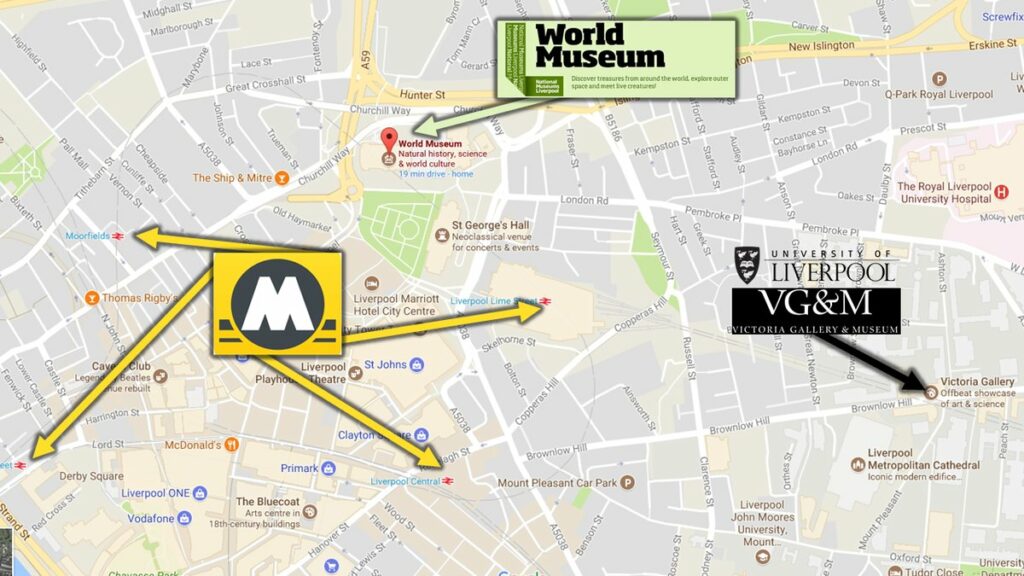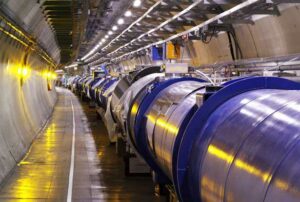Treat cancer? Generate energy? Make food last longer?
The people of Liverpool are being invited to participate in a community-designed art installation more than 20 metres beneath the city’s streets. It will showcase the city’s acclaimed artists and ground breaking scientific discoveries made possible by particle accelerators. It is a result of an exciting partnership between The University of Liverpool, the World Museum, Victoria Gallery & Museum and Merseyrail. The first family workshop is being held on the 25 October 2018.
The Tale of Two Tunnels idea was conceived by Dr Chris Edmonds, a lecturer at The University of Liverpool, who says: “Liverpool plays a significant role in some of the world’s largest scientific collaborations, working on questions ranging from ‘what happened at the very beginning of time’ to ‘how we can improve cancer treatment’.
“By working together to create the story of a giant machine that can change the world we want to welcome the people of Liverpool into this global community. We have a fantastic team of people helping to build the event, now we need your input.”
The Two Tunnels project aims to connect residents of all ages with the world-leading science taking place on their doorsteps through a series of art workshops culminating in a unique exhibition. It will mimic the world’s biggest accelerator, CERN’s Large Hadron Collider (LHC), within the Wirral Loop Line.
The four stations on the Wirral Line – which is 9 times smaller (2 miles) than the 17-mile LHC – will be used to mirror the four detectors of the real accelerator. These detectors are where particles collide, having built up speed around the accelerator, and where physicists examine the collisions to discover more about the particles’ make-up, about matter and anti-matter, and what other secrets of the universe they can reveal.
The route, which includes Liverpool Lime Street station, Liverpool’s World Museum and the Victoria Gallery & Museum, will feature interactive installations. An app that will enable visitors to find out more about the big questions about the universe that Liverpool scientists are exploring through particle accelerators, such as the LHC.
Professor Carsten Welsch, Head of Physics at The University of Liverpool, said: “Particle physics is our generation’s equivalent of space exploration. It has the potential to change the world and requires ‘atom smashers’ that are at the cutting edge of technology. Earlier this year, Liverpool scientists secured a breakthrough at CERN and we are involved in the design of a potential successor, the Future Circular Collider. There are also important local links: Right here in the Wirral, The Clatterbridge Cancer Centre was the world’s first hospital-based proton beam therapy facility.”
“We’re already working with local schools and groups and hope more people will get involved to help create the ‘Two Tunnels’ so everyone canfeel part of this exciting event.”
To celebrate The Tale of Two Tunnels’ launch, The University of Liverpool and Science and Technology Facilities Council (STFC) is holding the first public workshop during Autumn half-term on 25 October, 7-8:30pm.
Dr Derek Gillespie, Head of Skills and Engagement at the STFC, which is supporting the Tale of Two Tunnels through their public engagement fund, commented: “The benefits of science and technology research impact us every single day. Our grants allow everyone to engage with, question, interpret and enjoy science and technology in a manner that’s relevant to their lives.”
The University’s academics Drs Chris Edmonds, Barry King and Laura Harkness-Brennan will be joined by the FACT learning team’s Neil Winterburn to deliver community over the coming months.
To find out more or to book a free ticket for The Tale of Two Tunnels workshop, please visit bit.ly/2N3psBr


